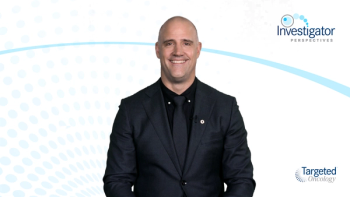
Opinion|Videos|April 21, 2025
Ruxolitinib Therapy for cGVHD: Insights on Patient and Safety Monitoring
Author(s)Nelson Chao, MD, MBA
A panelist discusses how managing adverse events (AEs) in patients with chronic graft-vs-host disease (cGVHD) treated with ruxolitinib requires a structured monitoring approach that balances therapeutic efficacy with patient safety through regular clinical evaluations, laboratory assessments, and proactive management strategies tailored to individual risk profiles.
Advertisement
Episodes in this series

Video content above is prompted by the following:
- How do you monitor and mitigate AEs in patients with cGVHD treated with ruxolitinib?
- What are the key signs to monitor?
- How does the risk of infection change your treatment approach?
- When do you consider dose modifications or treatment discontinuation?
- What is your approach to patient education when treating steroid-refractory cGVHD?
- Please discuss how treatments impact quality of life and share strategies to keep patients informed about, eg, disease response and symptoms to look out for.
Advertisement
Advertisement
Advertisement
Trending on Targeted Oncology - Immunotherapy, Biomarkers, and Cancer Pathways
1
FDA Approves Subcutaneous Amivantamab for EGFR-Mutated NSCLC Indications
2
Enfortumab Vedotin Plus Pembrolizumab Improves Survival in MIBC
3
Long-Term ECHO Data Support Concurrent Acalabrutinib/BR in MCL
4
FDA Grants Regular Approval to Rucaparib for BRCA-Mutated mCRPC
5








































